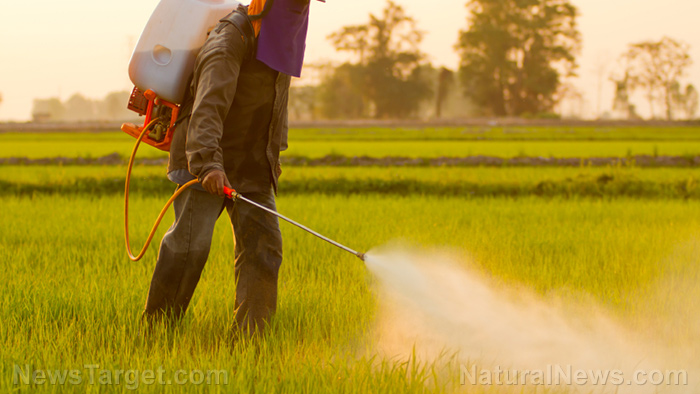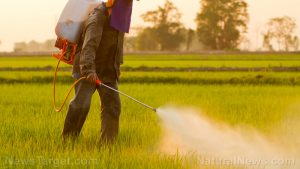
Hexythiazox — toxicity, side effects, diseases and environmental impacts
Saturday, December 02, 2017 by Janine Acero
http://www.naturalpedia.com/hexythiazox-toxicity-side-effects-diseases-and-environmental-impacts.html

Hexythiazox is a non-systemic insecticide and acaricide which has ovicidal, larvicidal and nymphicidal activity, which means it acts against the egg, larval, and nymph stages of insect pests. It can be applied at any stage of plant growth from budding to fruiting.
This chemical was first registered in Japan in 1985, and the Joint Meeting on Pesticide Residues (JMPR) first evaluated it in 1991. The chemical name for hexythiazox is (4RS,5RS)-5-(4-chlorophenyl)-N-cyclohexyl-4-methyl-2-oxo-1,3-thiazolid ine-3-carboxamide. Its molecular formula is C17H21ClN2O2S.

Other names and identifiers for hexythiazox include:
- Hexithiazox
- Hexitiazoxi
- Nissorun
- Savey
List of known side effects
Hexythiazox has not been linked to adverse effects in any epidemiological reports, but a single poisoning incident has been reported in the Philippines, according to the Toxicology Data Network website.
The open chemistry database PubChem notes that the U.S. Environmental Protection Agency (EPA) classified this chemical as a “Possible Human Carcinogen” based on experimental exposures on female mice which resulted in an increased incidence of both benign and malignant liver tumors.
Body systems affected by hexythiazox
Hexythiazox was also found to cause liver, ovarian, and kidney weight increase, as per further animal tests.
InChem.org reported that health examinations were performed on a group of 16 to 26 workers in a Japanese manufacturing plant and found no adverse effects on the examined parameters after three years of continuous exposure to hexythiazox.
Items that can contain hexythiazox
This chemical is used as an active ingredient in certain products, such as Hexythiazox 10 WP, Bulk 10 WP, Nissorun 10WP, Ocaren. Example manufacturers and suppliers of products containing hexythiazox include: Anorgachim SA, Hellafarm SA, Nippon and FCC.
Hexythiazox residue can be found in a wide range of fruits and vegetables, such as:
- Apples
- Citrus fruits (grapefruits, oranges, lemons, tangerines)
- Grapes
- Pears
- Almonds
- Pecans
- Cherries
- Nectarines
- Plums
- Berries (blackberries, raspberries, strawberries)
- Dates
- Tomatoes
- Cucumbers
- Melons
- Snap beans
- Sweet corn
- Lima beans
- Pulses
- Cotton seeds
- Hops
- Maize
How to avoid hexythiazox
A material safety data sheet gives the following safety measures and first-aid in handling, mixing and applying flubendiamide.
- Wear safety glasses with side shields (or goggles). Immediately flush contaminated eyes with running water for a few minutes in case of direct contact. Remove contact lenses first, if applicable.
- Wear protective gloves and protective clothing. Carefully remove any contaminated clothing item, avoiding contact with skin. Wash the contaminated part with soap and water. Discard any heavily-drenched or contaminated clothing and other absorbent materials; do not reuse them.
- In case of chemical aspiration, find a well-ventilated area or go outside where there is fresh air.
- Do not eat, drink or smoke near any chemical. In case of accidental ingestion, do not induce vomiting. Seek immediate medical attention.
- Refer to the workplace regulations regarding proper handling of equipment before applying chemicals.
Where to learn more
Summary
Hexythiazox is an insecticide that acts against the egg, larval and nymph stages of insect pests.
A single poisoning incident associated with hexythiazox was reported. This chemical has been classified as a possible carcinogen in humans as per the EPA.
Sources include:
Tagged Under: Tags: Hexythiazox





